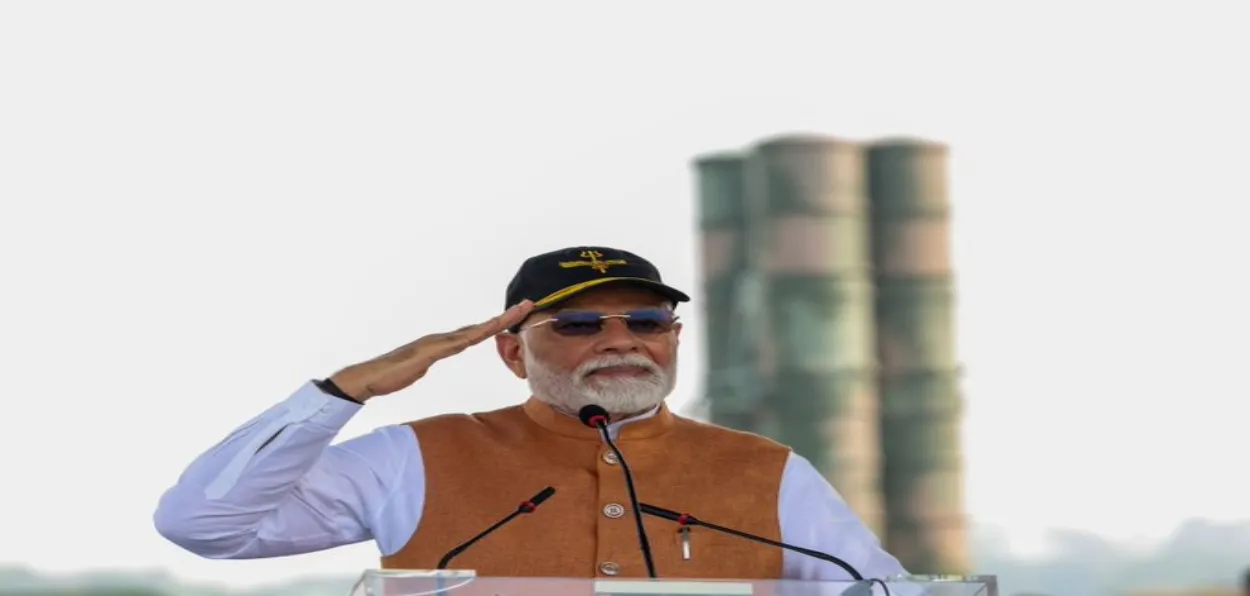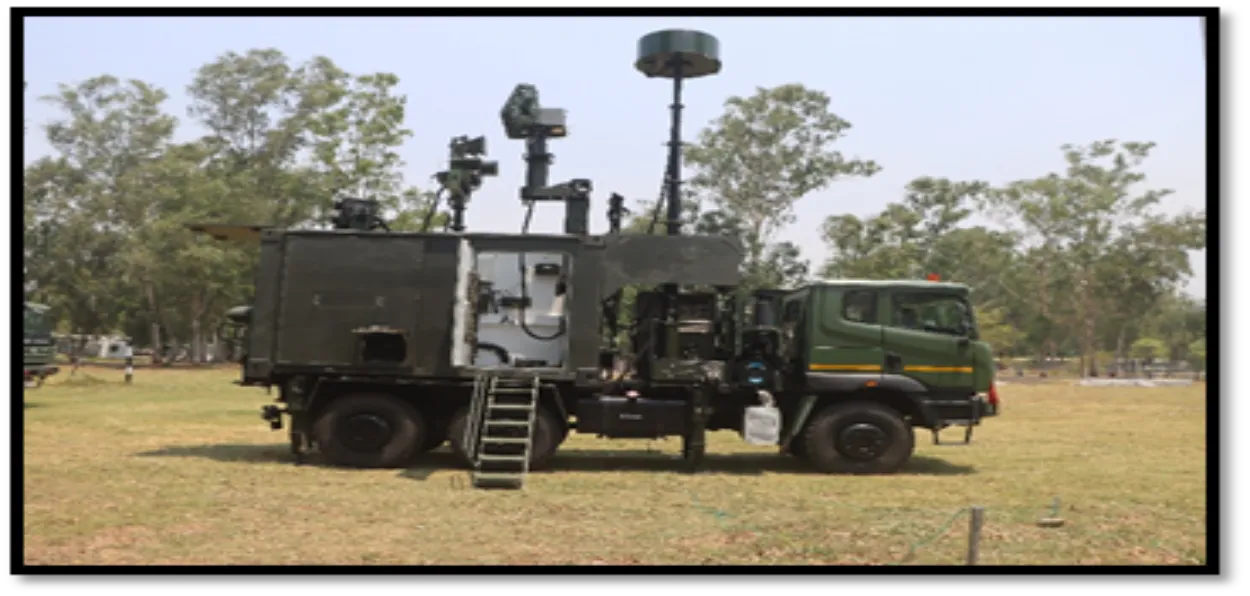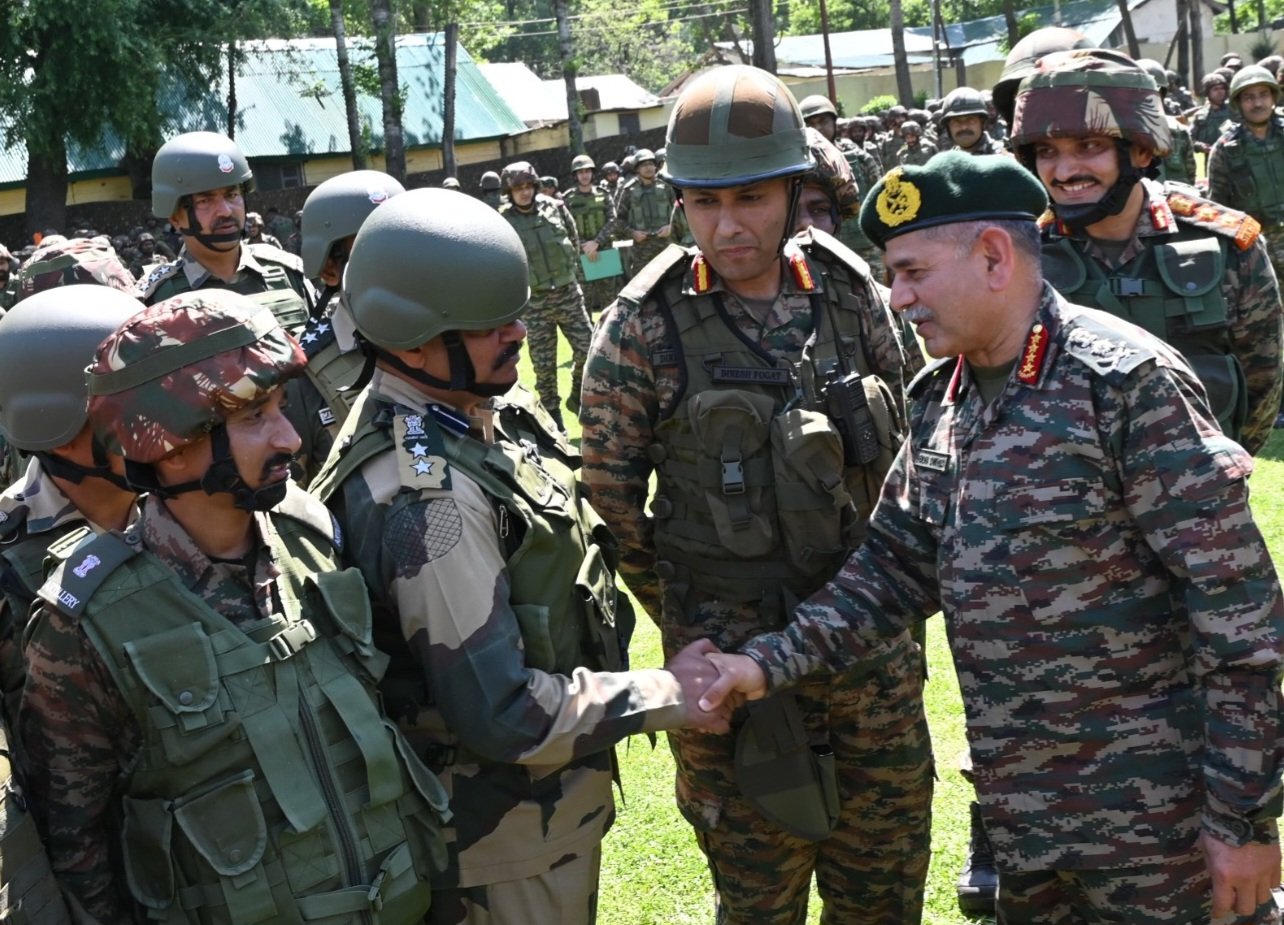
Mahmood Hassan
Operation Sindoor against Pakistan showcased India's significant improvements in warfare technology. India could respond and retaliate to the enemy by testing new home-made weapons. Conventional warfare has undergone a paradigm shift, with this mission proving India’s ability to strike with precision and confidence using indigenous technologies and enhanced Intelligence, Surveillance, and Reconnaissance (ISR) capabilities.
This has not only neutralized threats across the border but also symbolized India’s gradual transition from a dependent arms importer to a producer of world-class equipment. The new weapons have given a new dimension to warfare technology.
Many strategists used the term “new age warfare” as it demonstrated the extensive use of ‘Unmanned Aerial System’ (UAS) developed by the Defence Research & Development Organization (DRDO). The UAS penetrated deep into Pakistani territory and clicked quality photographs of the intended targets, enabling the Indian Air Force to launch precise strikes. Foreign weapon systems, such as the Israeli Heron MK-H, were used in conjunction with the indigenously built TAPAS–BH–201 and Rustom II, with assistance from ISRS.
Quadcopters and micro-drones played a crucial role in relaying live feeds and target acquisition data via the Army’s Integrated Battle Management System (IBMS). India’s Integrated Air Command and Control System (IACCS) has helped the Air Defence System to provide seamless connectivity via Satellite uplinks and mobile platforms. Akashteer (Sky Arrow), a defense control and reporting mechanism, was developed indigenously by Bharat Electronics Limited in collaboration with DRDO, providing digitized command for Army Air Defence. This system integrates the radars, sensors, and communication systems into a single vehicle-based framework to detect enemy aircraft, drones, and missiles.
The Air Defence shield has become an important feature of modern-day warfare. Radar, control centres, defensive fighter aircraft, ground-based air defence missiles, artillery, and electronic warfare systems are such features that were used extensively in today’s warfare. Radar technology through satellite is used to detect any enemy launching an Intercontinental Ballistic Missile (ICBM).

Akashteer Defence System
Air Defence network worked in tandem with the C-3 military calls “Command, control, and commitment system”. There was extensive use of drone technology in this conflict. Pakistan used Turkish and Chinese-made drones against India, which were easily intercepted and neutralized by India’s Air Defence System. India has claimed to have destroyed more than 600 drones flying from enemy territory.
Media reports claimed that one Indian drone fell on Rawalpindi Stadium when a cricket match was in progress. Harop destroyed a Chinese-made Air Defense System near Lahore. There was no major loss through this attack. Pakistan was using almost 80 percent of the weapons imported from China.
Drones emerged as the newest weapons of choice in warfare. Similar action was seen in the recent Israel-Iran war, Russia-Ukraine conflict, or Israel–Hamas conflict. The Indian army has purchased drones worth Rs 295 crores from private companies. The use of powerful drones like Nagastra 1R, Kamikaze, or Switch was successfully used in the operation. India is gradually enhancing its indigenous defense manufacturing capability within the country. Indigenously built Surface to Air Missile (SAM) like Pechora and OSA-AK destroyed enemy drones.
The self-sufficiency includes having the ability to design, fabricate, and assemble defense equipment and systems with negligible reliance on foreign supplies. Historically, India has been relying on the import of technologies at a very high cost. It has modernized the weapon system, which includes advanced weaponry and a sophisticated weapons system. Military spending has more than doubled over the past decade. In fact there is readiness and commitment towards boosting the nation’s defense potential of moving towards Atmanirbhar Bharat.
The Defense Production & Export Promotion Policy, 2020, and the vision towards self-reliance and export are gradually yielding positive results. Government funding provisions have been introduced in areas like Make-I, Technology Development Fund (TDF), and innovations for Defense Excellence (iDEX) projects. The TDF scheme is executed by DRDO, which supports indigenous development by MSMEs and startups.
An allocation of Rs 60 crore has been made under the TDF scheme for 2025-26. More than 500 start-ups and micro, small, and medium enterprises (MSMEs) are working under the aegis of Innovations for Defence Excellence (iDEX) with a focus on innovative projects in the defence sector. These positive steps have helped the defence export to hit an all-time high of Rs. 23,622 crore for the FY 2024-25, an increase of Rs 2539 crore or 12.04 percent from the FY 2023-24. Significantly, the private sector contributed Rs 15,233 crore out of the total production. This figure is expected to reach Rs 50,000 crores by 2029.
 Army Chief General Dwivedi with Troops in Srinagar after Operation Sindoor
Army Chief General Dwivedi with Troops in Srinagar after Operation Sindoor
According to a Defense Parliamentary Study Committee report published in December 2024, it stated that defence export items have been exported to more than 100 countries across the world, including 228 Dornier aircraft , 155mm advanced towed artillery guns, Brahmos and Akash missiles, radar simulators, Dhruv simulators for ship navigation, Pinaka rockets, etc. India has developed the handheld rocket launcher called ‘Isla system’ with indigenous technology. Anti-Aircraft artillery, UAVs, and Electronic warfare it is designed to disrupt, deceive, and destroy threats using the power of the electromagnetic spectrum. Electronic warfare is most used for jamming enemy radar and targeting systems that operate both on land and in the air.
The Air Defence College and Centre in Gopalpur, Odisha, is upgrading the lab for the production of sophisticated UAVs after the surgical strike inside Pakistan. This centre played a critical role in supplying men and machines to forward areas during Operation Sindoor.
However, India is still the largest importer of arms, as stated by the Stockholm International Peace Research Institute (SIPRI). The country still has to bear huge costs for the purchase of expensive weaponry from Israel, Russia, and France. Russian-made S-400, renamed as Sudarshan Chakra played an important role in bringing down the drones and missiles launched from Pakistan. Sometimes, the purchase of technology has many drawbacks, as these technologies are not transferred. For example, in 1987, India purchased Sikorsky Helicopters from the Augusta Wasteland Company of the USA. The Company did not transfer the technology, and the company closed down, making it difficult to service these costly flying machines.
However, the Naval Aircraft Maintenance Centre at Cochin has developed a lab to create indigenous parts to fit into the old aircraft and make them reusable. Similar steps may have to be used for the recently purchased Rafale aircraft as well. We have to import the spare parts from France as the technology is unavailable. The DRDO and other organizations have to take the lead to develop indigenous technologies under the “Make in India” campaign.
ALSO READ: Martyr Mohd Imteyaj gets Vir Chakra for Op Sindoor
For upgrading the warfare technology, India has to increase expenditure as part of the Make in India mission. The defence budget of India is much less compared to that of China or the USA. It has to enhance its budget for Research and Development of the defence sector, as lately the country is developing significant indigenous technologies. Recently, addressing students of IIT, Madras, the National Security Advisor highlighted India’s military capabilities and growing technological prowess in neutralizing threats emanating from Pakistan through Operation Sindoor and that no Indian property was damaged from an enemy drone attack. This proves the success of Indian technology in adverse conditions.
Mahmood Hassan is a senior IAS officer with the Assam Government.
